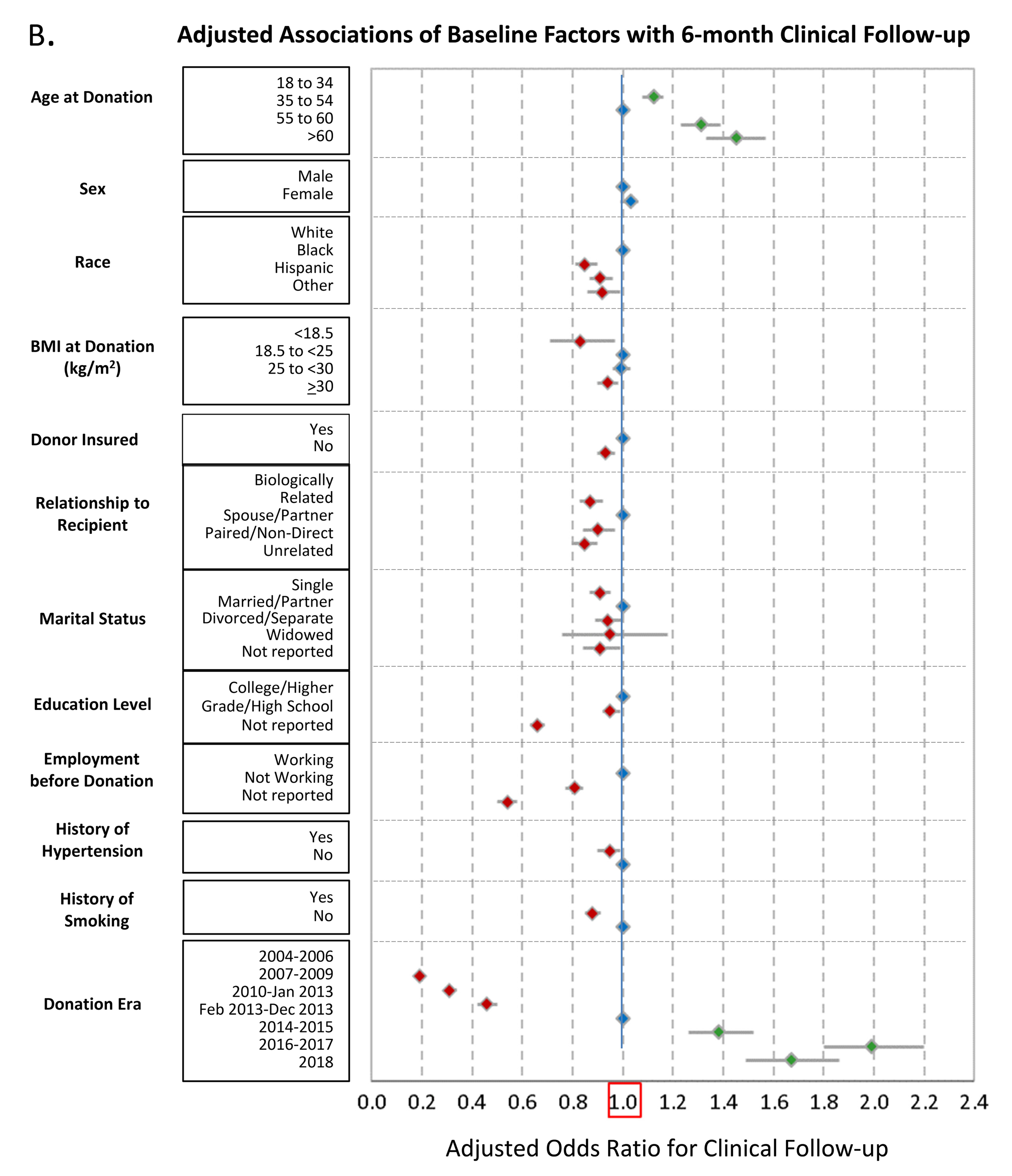Associations of Lack of Insurance and Other Sociodemographic Traits with Deficiencies in Follow-Up After Living Kidney Donation
K. Lentine1, R. Hays2, N. Lam3, A. Tietjen4, A. Muiru5, H. Xiao1, A. Garg6, C. Thomas7, G. McNatt7, R. Howey8, U. Lebron-Banks9, M. Cooper10, M. Conboy11, B. Kasiske11
1Saint Louis Univ, Saint Louis, MO, 2Univ of Wisconsin, Madison, WI, 3Univ of Calgary, Calgary, AB, Canada, 4St. Barnabas, Livingston, NJ, 5Univ of California, San Francisco, San Francisco, CA, 6Western Univ, London, ON, Canada, 7Univ of Iowa, Iowa City, IA, 8Toyon Associates, Concord, CA, 9New York Presb Hosp, New York, NY, 10Medstar-Georgetown, Washington, DC, 11SRTR, Minneapolis, MN
Meeting: 2021 American Transplant Congress
Abstract number: 371
Keywords: Donors, unrelated, Kidney, Living donor, Quality of life
Topic: Clinical Science » Kidney » Kidney Living Donor: Other
Session Information
Session Name: Live Kidney Donation
Session Type: Rapid Fire Oral Abstract
Date: Tuesday, June 8, 2021
Session Time: 6:00pm-7:00pm
 Presentation Time: 6:25pm-6:30pm
Presentation Time: 6:25pm-6:30pm
Location: Virtual
*Purpose: Follow-up after living kidney donation in the United States has improved with recent policy mandates. We hypothesized that lack of insurance at donation may be a barrier to postdonation follow-up.
*Methods: We examined Scientific Registry of Transplant Recipients (SRTR) data for 90.460 living kidney donors (LKD) in 2004-2018 to examine associations (adjusted odds ratio, aOR) of insurance status and other baseline factors with clinical and laboratory follow-up after donation.
*Results: Follow-up increased over time, and was especially high in older LKD. Follow-up was lower in uninsured compared to insured LKD over time, including in the era of the Affordable Care Act (Fig. A). In 2018, for uninsured vs insured LKD, respectively, clinical follow-up was 87.5% vs 90.4% at 6-months, and 76% vs 86.7% at 12-months, while 12-month lab follow-up was 55.4% vs 68.4%.
In multivariate regression including adjustment for donation year and other baseline factors, uninsured status was associated with 7% lower odds of 6-month clinical follow-up (aOR, 0.93) and 14% lower odd of lab follow-up (aOR, 0.86). Follow-up was also significantly (P<0.05) lower for LKD who were African American (aOR 0.85) or Hispanic (aOR 0.91), unrelated to their recipient (aOR 0.85), not working (aOR 0.81) and with less than college education (Fig. B).
Associations were similar for 1-year follow-up.
*Conclusions: While follow-up after living kidney donation is improving, uninsured LKD and those who are non-white, unemployed, and with lower education are less likely to receive follow-up. Novel initiatives are needed to provide access to follow-up care for at-risk LKD, including the uninsured and under-insured, to minimize the risk of socioeconomic disparities in long-term postdonation outcomes.
To cite this abstract in AMA style:
Lentine K, Hays R, Lam N, Tietjen A, Muiru A, Xiao H, Garg A, Thomas C, McNatt G, Howey R, Lebron-Banks U, Cooper M, Conboy M, Kasiske B. Associations of Lack of Insurance and Other Sociodemographic Traits with Deficiencies in Follow-Up After Living Kidney Donation [abstract]. Am J Transplant. 2021; 21 (suppl 3). https://atcmeetingabstracts.com/abstract/associations-of-lack-of-insurance-and-other-sociodemographic-traits-with-deficiencies-in-follow-up-after-living-kidney-donation/. Accessed January 2, 2026.« Back to 2021 American Transplant Congress


